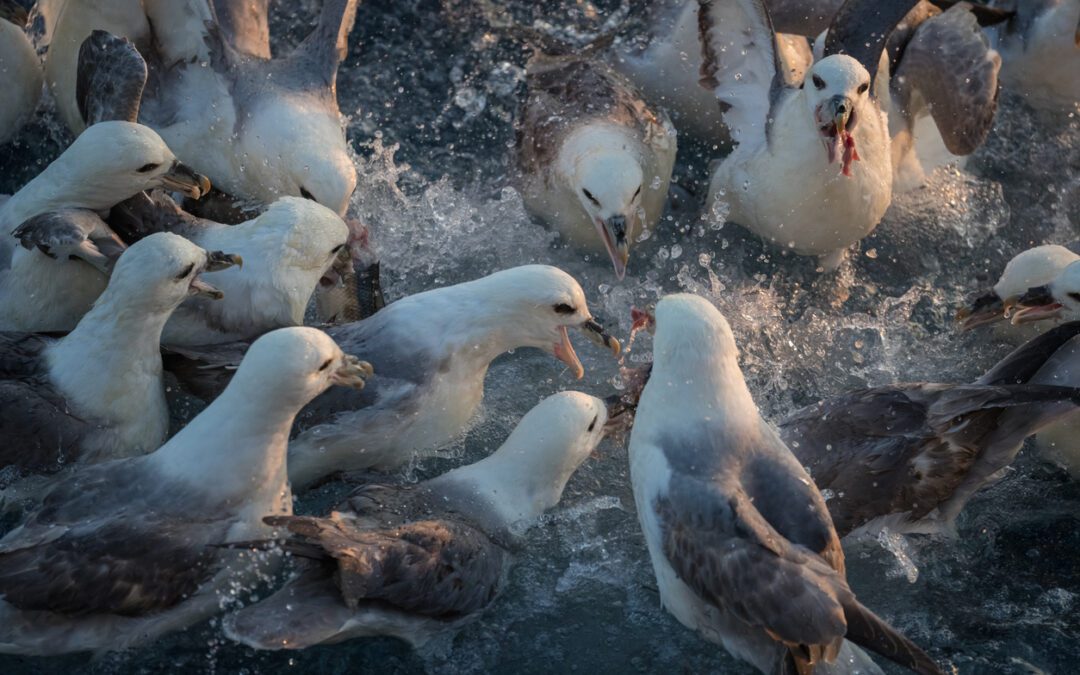
by Pigeon Patrol | Mar 11, 2024 | Bird Spike, Pigeon Droppings, Pigeon Predators, Pigeons, Pigeons in the News, Raccoons
Wildlife rehabilitation calls for city to ban toxins that poison Saskatoon pigeons “Basically if you can imagine a bird having seizures,” said Jan Shadick, Living Sky Wildlife Rehabilitation executive director, describing a pigeon’s painful death after eating poisoned corn. “It’s an unfortunate way to die and it’s an unfortunate use of pigeon control methods within the city.”
The most common poison used is Avitrol. Shadick said she wants to see the city ban its use, or at least require the area it’s scattered around to be labelled, like when spraying pesticides. She said her wildlife rehabilitation sees hundreds of poisoned pigeons — and some other birds — a year, but they’re also seeing it punch up the food chain. “Dogs and cats have been demonstrated to have eaten these poison pigeons and died from it,” she said. “A crow would eat it, a raven would eat it, numerous birds would eat it and it was open to anybody who wanted a free lunch. A squirrel could get a hold of it,” explained owner Jason Hiltz. Instead, he said the company uses deterrents like nets and pigeon spikes.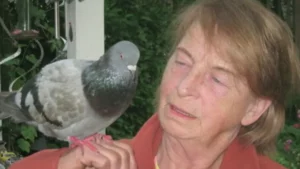
Two years ago, the City of Saskatoon banned the use of poisoned corn according to Shadick, but only on city property. Shadick said it hasn’t made a difference. She said while most poisons to kill birds can only be bought by licensed professionals, some companies sell almost identical products to anyone online. “The money that people are currently spending on putting out poisoned corn could be spent putting out birth control corn,” she said, explaining using birth control is a more humane version of pigeon population control.
Pigeon Patrol
Pigeon Patrol Products & Services is the leading manufacturer and distributor of bird deterrent (control) products in Canada. Pigeon Patrol products have solved pest bird problems in industrial, commercial, and residential settings since 2000, by using safe and humane bird deterrents with only bird and animal friendly solutions. At Pigeon Patrol, we manufacture and offer a variety of bird deterrents, ranging from Ultra-flex Bird Spikes with UV protection, Bird Netting, 4-S Bird Gel and the best Ultrasonic and audible sound devices on the market today.
Canada’s top wholesaler for bird deterrent products for twelve consecutive years.
Contact us at 1- 877– 4– NO-BIRD, (604) 585-9279 or visit our website at https://www.pigeonpatrol.ca/
Bird Gone, Pigeon Gone, Pigeon problems, pigeon spikes, 1-877-4NO-BIRD, 4-S Gel, Bird Control, Pigeon Control, bird repellent, Bird Spikes, sonic bird repellent, stainless steel bird spikes, bird spikes Vancouver, Ultra Sonic Bird Control, Bird Netting, Plastic Bird Spikes, Canada bird spike deterrents, Pigeon Pests, B Gone Pigeon, Pigeon Patrol, pest controller, pest control operator, pest control technician, Pigeon Control Products, humane pigeon spikes, pigeon deterrents, pigeon traps, Pigeon repellents, Sound & Laser Deterrents, wildlife control, raccoon, skunk, squirrel deterrent, De-Fence Spikes, Dragons Den, Pigeon, Pigeon Patrol, Pigeons Roosting, Vancouver Pigeon Control, Bird Spikes, Bird Control, Bird Deterrent, Pigeon Deterrent, Surrey Pigeon Control, Pest, Seagull deterrent Vancouver Pigeon Blog, Birds Inside Home De-fence, Pigeon Nesting, Bird Droppings, Pigeon Dropping, woodpecker control, Keep The Birds Away, Birds/rats, seagull, pigeon, woodpecker, dove, sparrow, pidgeon control, pidgeon problem, pidgeon control, flying rats, pigeon Problems, bird netting, bird gel, bird spray, bird nails, bird guard, Pigeon control, Bird deterrents, Pigeon deterrents, Bird control, solutions, Pigeon prevention, Pigeon repellent, Bird proofing, Pest bird management, Pigeon spikes, Bird netting, Humane bird control, Bird exclusion, Urban bird control, Anti-roosting devices, Pigeon removal, Bird barriers
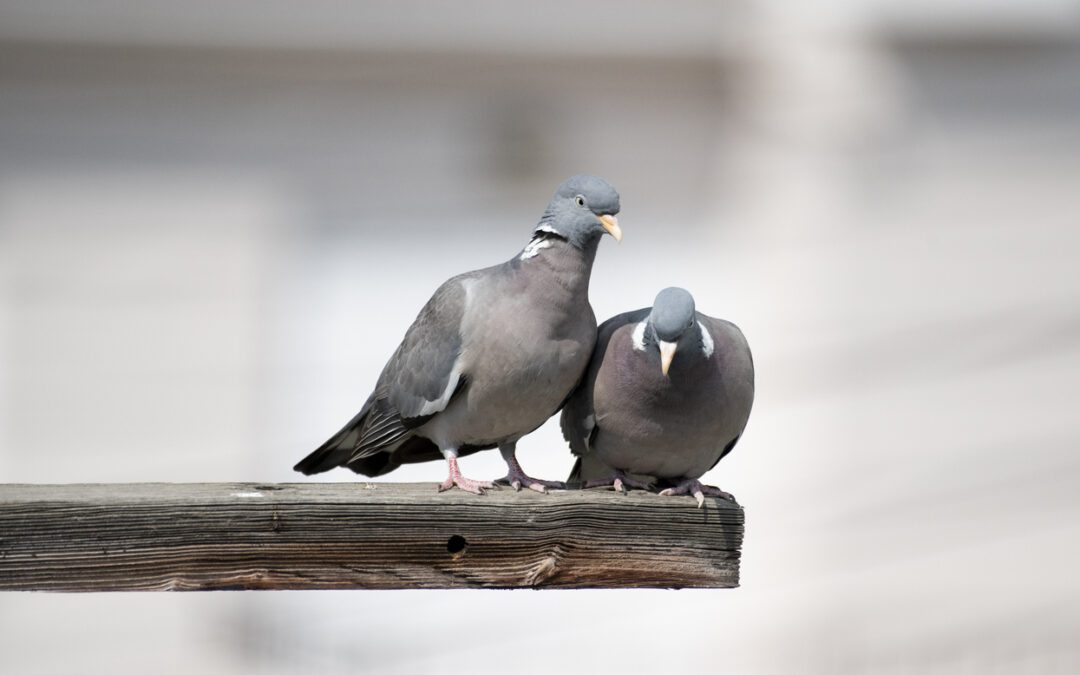
by Pigeon Patrol | Mar 11, 2024 | Bird Netting, Columbidae, Doves, Pigeons in the News, Raccoons, Sparrows
As for the pigeon, Randle said it was let go, without its luggage this time. Lost pigeon flew the coop, finding her way from France to Calgary Homing pigeons are a remarkable species with internal compasses that are able to memorize landmarks to retrace a path home. But one particular bird ended up so far off its course, it would have been a miracle for her to find her way back.
After being found frozen to a front porch, she was taken in by Calgarian Alex Gray who didn’t know what else to do and posted on social media, eventually tracking down Jeanie Palmer, a woman who raises and rescues pigeons. “There were a lot of people who wanted the bird but couldn’t prove it was theirs, so I reached out to Jeanie and I said: ‘Alright, we don’t have traction and she doesn’t seem happy by herself, so by all means, come and get her,’” Gray said. Once Palmer got her home she did some digging and, being a member of the Canadian Pigeon Fancier’s Association, she reached out to her fellow fanciers who helped her identify the tag. “The band number has an ‘NL’ on it, it’s not Canadian and it’s not American, so where is this bird from?” Palmer said.
She’s from the Netherlands and belonged to Henk Bax, a man who races pigeons. “He said, this bird went missing from a race in Vervins, France on April 25, 2021. She was 200 kilometres from the coop and a year-and-a-half later she winds up on the sidewalk in Calgary, Alberta,” Palmer said. The Dutch owner gave his blessing to keep the pigeon.
“How would you fly from France all the way here? How would she make that? I don’t think she could have made it that far, kudos to her if she did,” Palmer said. “There’s a reason we named her Amelia Earhart, maybe she did fly here,” Palmer said. “My jaw dropped,” Gray said. “I couldn’t believe it and I wondered how the heck this bird got here. Was it smuggled or did it land on a carrier ship and sailed off to the great unknown? Did it survive in some plane landing gear for a very long haul?” Both could hardly believe it.
“This could be a book. The bird who flew across the world, or the pigeon who got lost. You could make up any adventures you wanted her to be on. The fact I have her is crazy to me, pretty lucky,” Palmer said. She’s retiring from racing and will officially become a Canadian. It isn’t legal to ship a bird from Canada to the Netherlands. “She’s going to join my coop and be a spoiled lazy pigeon. Hopefully she will pick one of my handsome boys and have a happy little family of her own,” Palmer said.
Voted Best Canadian wholesaler for Bird Deterrent products ten years in a row. Contact us at 1 877-4-NO-BIRD,(604) 585-9279 or visit our website at www.pigeonpatrol.ca
Pigeon Patrol
Pigeon Patrol Products & Services is the leading manufacturer and distributor of bird deterrent (control) products in Canada. Pigeon Patrol products have solved pest bird problems in industrial, commercial, and residential settings since 2000, by using safe and humane bird deterrents with only bird and animal friendly solutions. At Pigeon Patrol, we manufacture and offer a variety of bird deterrents, ranging from Ultra-flex Bird Spikes with UV protection, Bird Netting, 4-S Bird Gel and the best Ultrasonic and audible sound devices on the market today.
Canada’s top wholesaler for bird deterrent products for twelve consecutive years.
Contact us at 1- 877– 4– NO-BIRD, (604) 585-9279 or visit our website at https://www.pigeonpatrol.ca/
Bird Gone, Pigeon Gone, Pigeon problems, pigeon spikes, 1-877-4NO-BIRD, 4-S Gel, Bird Control, Pigeon Control, bird repellent, Bird Spikes, sonic bird repellent, stainless steel bird spikes, bird spikes Vancouver, Ultra Sonic Bird Control, Bird Netting, Plastic Bird Spikes, Canada bird spike deterrents, Pigeon Pests, B Gone Pigeon, Pigeon Patrol, pest controller, pest control operator, pest control technician, Pigeon Control Products, humane pigeon spikes, pigeon deterrents, pigeon traps, Pigeon repellents, Sound & Laser Deterrents, wildlife control, raccoon, skunk, squirrel deterrent, De-Fence Spikes, Dragons Den, Pigeon, Pigeon Patrol, Pigeons Roosting, Vancouver Pigeon Control, Bird Spikes, Bird Control, Bird Deterrent, Pigeon Deterrent, Surrey Pigeon Control, Pest, Seagull deterrent Vancouver Pigeon Blog, Birds Inside Home De-fence, Pigeon Nesting, Bird Droppings, Pigeon Dropping, woodpecker control, Keep The Birds Away, Birds/rats, seagull, pigeon, woodpecker, dove, sparrow, pidgeon control, pidgeon problem, pidgeon control, flying rats, pigeon Problems, bird netting, bird gel, bird spray, bird nails, bird guard, Pigeon control, Bird deterrents, Pigeon deterrents, Bird control, solutions, Pigeon prevention, Pigeon repellent, Bird proofing, Pest bird management, Pigeon spikes, Bird netting, Humane bird control, Bird exclusion, Urban bird control, Anti-roosting devices, Pigeon removal, Bird barriers
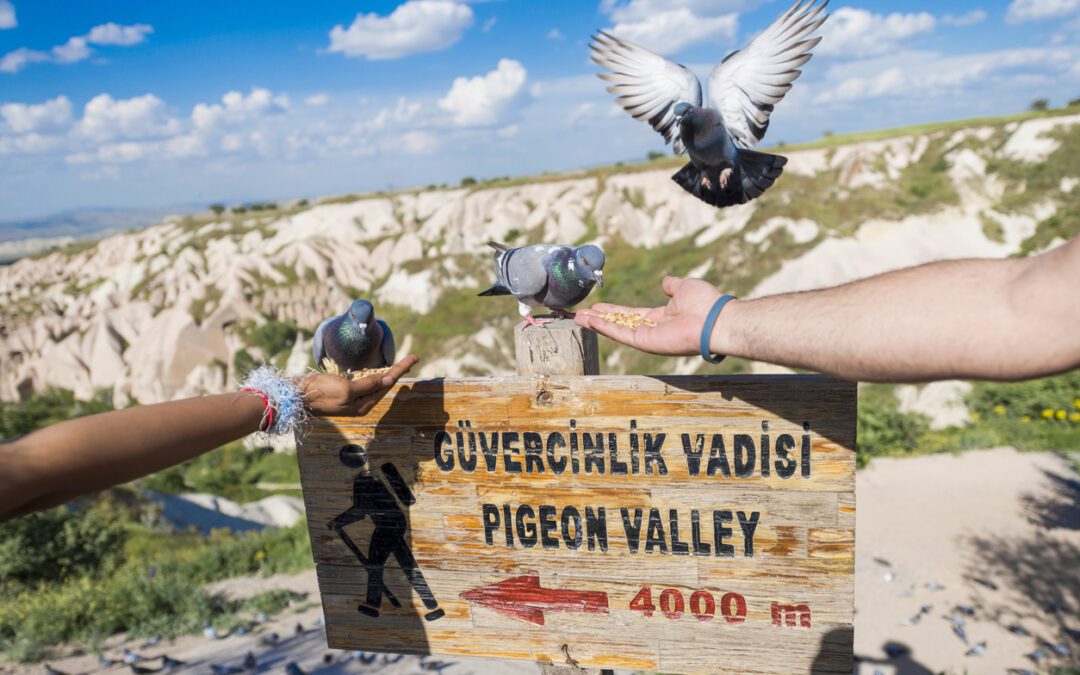
by Pigeon Patrol | Mar 11, 2024 | Bird Netting, Bird Spikes, Columbidae, Pigeons, Pigeons in the News, Sparrows
Prison guards at the Pacific Institution in Abbotsford intercepted a pigeon with a small backpack containing crystal meth Prison guards in B.C.’s Fraser Valley have to be vigilant against drones trying to drop contraband to waiting inmates or someone trying to throw drugs over the walls, but a recent discovery has also caused some concern.
“A pigeon was located at Pacific Institution, inside the walls, and it appeared to have a small package, sort of like a backpack attached to it,” John Randle, president of the Pacific Region for Union of Canadian Correctional Officers told Global News. He said the package contained crystal meth. The incident reportedly happened on Dec. 29 at the maximum, medium and minimum federal penitentiary located in Abbotsford. Randle said the pigeon was found near one of the recreation yards at the institution.
“It was spotted by correctional officers, I believe, and security intelligence officers when the officers were doing their standard patrols around and throughout the unit and institution, that’s when they initially spotted the bird with the package on it,” he said. “And then, of course, I believe there was some creative work – because the bird moved around quite a bit – in order to track it and capture it. But it was just outside one of the unit yards when it was first spotted.” Peruvian police catch “narco pigeon” trying to smuggle marijuana into prison
Randle said they have had issues with contraband in the past, with drones or something being thrown over the wall, but in his 13-year career, he has never heard of birds being used to smuggle something into a prison. “It’s almost like the inmates and the criminals are going back in time and using older technology,” he said.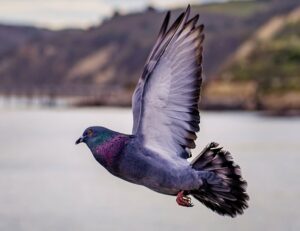
In November, Mission Institution was locked down for days due to a belief that a drone may have dropped a firearm onto the prison grounds. The lockdown was lifted when no gun was found but officers did locate a drone. Lost pigeon flew the coop, finding her way from France to Calgary Randle said keeping drugs out of the prisons has become a huge part of correctional officers’ jobs every day, not just in B.C. but across Canada. “Especially with drones and throw-overs, the drug problem is growing on a daily basis,” he said. “This pigeon thing adds a new element to that for sure and we’ll be on the lookout for it but definitely drones have been the big thing for us.” He added that right now it is unclear to investigators if someone inside the prison was training the bird or if it was someone outside the institution. Randle said they have increased staff and patrols in order to watch for any potential drops. He said they also have anti-drone technology that works like a radar.
The Correctional Service of Canada and the RCMP have launched a joint investigation into what happened.
Pigeon Patrol
Pigeon Patrol Products & Services is the leading manufacturer and distributor of bird deterrent (control) products in Canada. Pigeon Patrol products have solved pest bird problems in industrial, commercial, and residential settings since 2000, by using safe and humane bird deterrents with only bird and animal friendly solutions. At Pigeon Patrol, we manufacture and offer a variety of bird deterrents, ranging from Ultra-flex Bird Spikes with UV protection, Bird Netting, 4-S Bird Gel and the best Ultrasonic and audible sound devices on the market today.
Canada’s top wholesaler for bird deterrent products for twelve consecutive years.
Contact us at 1- 877– 4– NO-BIRD, (604) 585-9279 or visit our website at https://www.pigeonpatrol.ca/
Bird Gone, Pigeon Gone, Pigeon problems, pigeon spikes, 1-877-4NO-BIRD, 4-S Gel, Bird Control, Pigeon Control, bird repellent, Bird Spikes, sonic bird repellent, stainless steel bird spikes, bird spikes Vancouver, Ultra Sonic Bird Control, Bird Netting, Plastic Bird Spikes, Canada bird spike deterrents, Pigeon Pests, B Gone Pigeon, Pigeon Patrol, pest controller, pest control operator, pest control technician, Pigeon Control Products, humane pigeon spikes, pigeon deterrents, pigeon traps, Pigeon repellents, Sound & Laser Deterrents, wildlife control, raccoon, skunk, squirrel deterrent, De-Fence Spikes, Dragons Den, Pigeon, Pigeon Patrol, Pigeons Roosting, Vancouver Pigeon Control, Bird Spikes, Bird Control, Bird Deterrent, Pigeon Deterrent, Surrey Pigeon Control, Pest, Seagull deterrent Vancouver Pigeon Blog, Birds Inside Home De-fence, Pigeon Nesting, Bird Droppings, Pigeon Dropping, woodpecker control, Keep The Birds Away, Birds/rats, seagull, pigeon, woodpecker, dove, sparrow, pidgeon control, pidgeon problem, pidgeon control, flying rats, pigeon Problems, bird netting, bird gel, bird spray, bird nails, bird guard, Pigeon control, Bird deterrents, Pigeon deterrents, Bird control, solutions, Pigeon prevention, Pigeon repellent, Bird proofing, Pest bird management, Pigeon spikes, Bird netting, Humane bird control, Bird exclusion, Urban bird control, Anti-roosting devices, Pigeon removal, Bird barriers
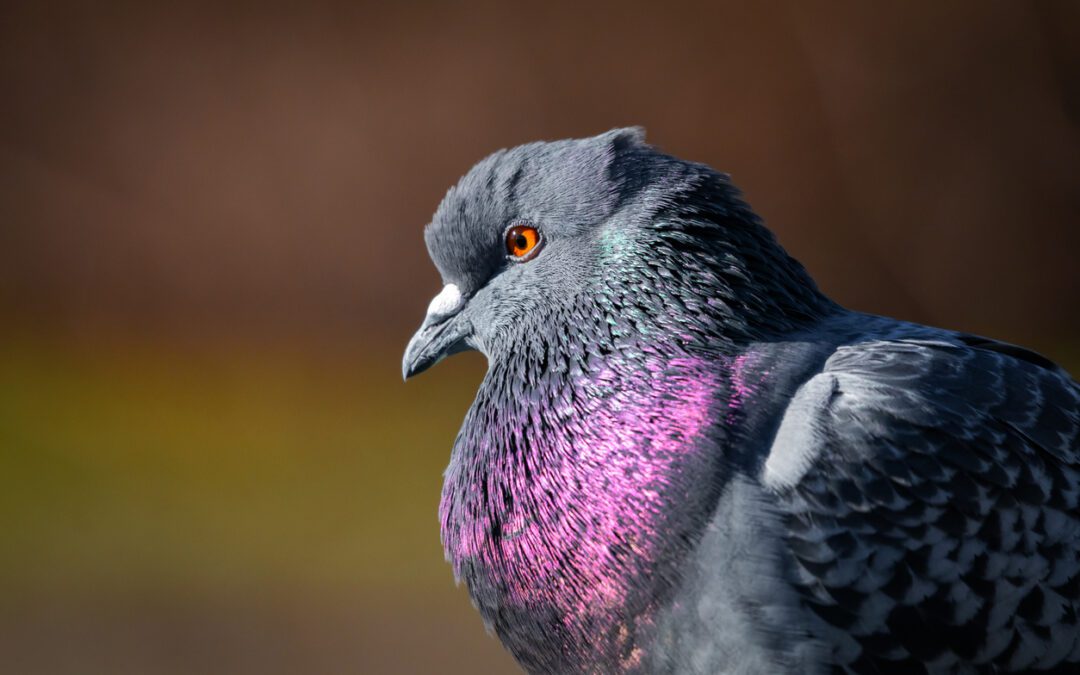
by Pigeon Patrol | Mar 11, 2024 | Bird Netting
Pink pigeon possibly dyed for gender reveal party in NYC dies
Flamingo, the dyed pink pigeon, has died. The Wild Bird Fund, who rescued the king pigeon and attempted to remove the colouring from its feathers, said the bird died on Feb. 6, likely as a result of inhaling toxins from the dye. “We hope the tale of his too-short life will help prevent more acts of careless cruelty,” the Wild Bird Fund wrote in a statement.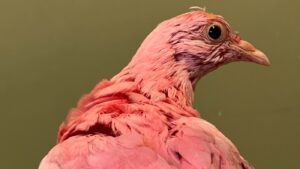
“Pigeons come in many different colors and plumages, but pink isn’t one of them,” wrote the Wild Bird Fund. It claimed the pink pigeon has naturally white feathers. In an updated statement, the Wild Bird Fund said the pigeon has been endearingly nicknamed “Flamingo.” The wildlife group said the bird, which is a domestic king pigeon fledgling, was “deliberately dyed” the fleshy pink colour with what the group believes is hair dye. The pigeon’s bright feathers make it more of a target for predators in the wild.
In a Twitter thread, the Wild Bird Fund said the pigeon may have been dyed for a gender reveal party. A popular tradition in North America and elsewhere, gender reveal parties are thrown for expectant couples to share the biological sex of their soon-to-come baby. The Wild Bird Fund said it has had “limited success” in trying to remove the dye from the bird’s feathers. The suspected hair dye has reportedly left a “very strong odor” on the animal, leaving caregivers worried for the bird’s respiratory health.
A pigeon dyed pink. A hand in a blue plastic glove is helping to hold the bird upright. Flamingo, the domestic king pigeon, was “deliberately dyed” pink with what the bird’s rescuers believe is hair dye. Facebook / Wild Bird Fund “Birds are highly sensitive to certain fumes, and this pigeon is essentially living inside a cloud,” it wrote. “We’re also concerned about him ingesting the chemical through preening. He’s currently quite weak and is struggling to keep food down.”
Flamingo is currently receiving heat, oxygen, subcutaneous fluids and medication to counteract any toxins in its digestive system.
Pigeon Patrol
Pigeon Patrol Products & Services is the leading manufacturer and distributor of bird deterrent (control) products in Canada. Pigeon Patrol products have solved pest bird problems in industrial, commercial, and residential settings since 2000, by using safe and humane bird deterrents with only bird and animal friendly solutions. At Pigeon Patrol, we manufacture and offer a variety of bird deterrents, ranging from Ultra-flex Bird Spikes with UV protection, Bird Netting, 4-S Bird Gel and the best Ultrasonic and audible sound devices on the market today.
Canada’s top wholesaler for bird deterrent products for twelve consecutive years.
Contact us at 1- 877– 4– NO-BIRD, (604) 585-9279 or visit our website at https://www.pigeonpatrol.ca/
Bird Gone, Pigeon Gone, Pigeon problems, pigeon spikes, 1-877-4NO-BIRD, 4-S Gel, Bird Control, Pigeon Control, bird repellent, Bird Spikes, sonic bird repellent, stainless steel bird spikes, bird spikes Vancouver, Ultra Sonic Bird Control, Bird Netting, Plastic Bird Spikes, Canada bird spike deterrents, Pigeon Pests, B Gone Pigeon, Pigeon Patrol, pest controller, pest control operator, pest control technician, Pigeon Control Products, humane pigeon spikes, pigeon deterrents, pigeon traps, Pigeon repellents, Sound & Laser Deterrents, wildlife control, raccoon, skunk, squirrel deterrent, De-Fence Spikes, Dragons Den, Pigeon, Pigeon Patrol, Pigeons Roosting, Vancouver Pigeon Control, Bird Spikes, Bird Control, Bird Deterrent, Pigeon Deterrent, Surrey Pigeon Control, Pest, Seagull deterrent Vancouver Pigeon Blog, Birds Inside Home De-fence, Pigeon Nesting, Bird Droppings, Pigeon Dropping, woodpecker control, Keep The Birds Away, Birds/rats, seagull, pigeon, woodpecker, dove, sparrow, pidgeon control, pidgeon problem, pidgeon control, flying rats, pigeon Problems, bird netting, bird gel, bird spray, bird nails, bird guard, Pigeon control, Bird deterrents, Pigeon deterrents, Bird control, solutions, Pigeon prevention, Pigeon repellent, Bird proofing, Pest bird management, Pigeon spikes, Bird netting, Humane bird control, Bird exclusion, Urban bird control, Anti-roosting devices, Pigeon removal, Bird barriers

by Pigeon Patrol | Mar 11, 2024 | Animal Deterrent Products, Bird Law, Bird Netting, Bird Spikes
Staff at B.C. prison bust another backpack-wearing pigeon
Correctional officers say they’ve caught another backpack-wearing pigeon at a B.C. prison.
John Randle, regional president for the Union of Canadian Correctional Officers, said the bird was captured inside the Matsqui Institution, a medium-security prison in Abbotsford, on Feb. 27.
Unlike a similar pigeon caught on the grounds of the nearby Pacific Institution in December, this pigeon’s backpack was empty. The prior pigeon was carrying a cargo of methamphetamine.
“The best guess, or educated guess I could make right now is that it looks like they were training this one to eventually bring in a package,” Randle said. “They didn’t find anything in the backpack that was secured to the pigeon.” The backpack, he told Global News, was fabricated out of blue jeans and bed sheets.
B.C. prison guards intercept pigeon carrying crystal meth “It’s a huge concern. We’re fighting the drone issue big time right now, almost on a daily basis. And now we’re going to start worrying about wildlife,” he said. “(We’re) searching and watching the skies I guess. It’s kind of funny to say that.”
Randle said the drone problem is a growing concern, noting that correctional officers had intercepted everything from ceramic knives to cellphones to drugs.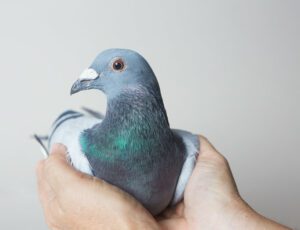
He said officers want to see more action from the federal government to combat smuggling, such as the deployment of netting or drone detection systems. Randle said corrections officers were also working with police on the smuggling problem.
Pigeon Patrol
Pigeon Patrol Products & Services is the leading manufacturer and distributor of bird deterrent (control) products in Canada. Pigeon Patrol products have solved pest bird problems in industrial, commercial, and residential settings since 2000, by using safe and humane bird deterrents with only bird and animal friendly solutions. At Pigeon Patrol, we manufacture and offer a variety of bird deterrents, ranging from Ultra-flex Bird Spikes with UV protection, Bird Netting, 4-S Bird Gel and the best Ultrasonic and audible sound devices on the market today.
Canada’s top wholesaler for bird deterrent products for twelve consecutive years.
Contact us at 1- 877– 4– NO-BIRD, (604) 585-9279 or visit our website at https://www.pigeonpatrol.ca/
Bird Gone, Pigeon Gone, Pigeon problems, pigeon spikes, 1-877-4NO-BIRD, 4-S Gel, Bird Control, Pigeon Control, bird repellent, Bird Spikes, sonic bird repellent, stainless steel bird spikes, bird spikes Vancouver, Ultra Sonic Bird Control, Bird Netting, Plastic Bird Spikes, Canada bird spike deterrents, Pigeon Pests, B Gone Pigeon, Pigeon Patrol, pest controller, pest control operator, pest control technician, Pigeon Control Products, humane pigeon spikes, pigeon deterrents, pigeon traps, Pigeon repellents, Sound & Laser Deterrents, wildlife control, raccoon, skunk, squirrel deterrent, De-Fence Spikes, Dragons Den, Pigeon, Pigeon Patrol, Pigeons Roosting, Vancouver Pigeon Control, Bird Spikes, Bird Control, Bird Deterrent, Pigeon Deterrent, Surrey Pigeon Control, Pest, Seagull deterrent Vancouver Pigeon Blog, Birds Inside Home De-fence, Pigeon Nesting, Bird Droppings, Pigeon Dropping, woodpecker control, Keep The Birds Away, Birds/rats, seagull, pigeon, woodpecker, dove, sparrow, pidgeon control, pidgeon problem, pidgeon control, flying rats, pigeon Problems, bird netting, bird gel, bird spray, bird nails, bird guard, Pigeon control, Bird deterrents, Pigeon deterrents, Bird control, solutions, Pigeon prevention, Pigeon repellent, Bird proofing, Pest bird management, Pigeon spikes, Bird netting, Humane bird control, Bird exclusion, Urban bird control, Anti-roosting devices, Pigeon removal, Bird barriers










